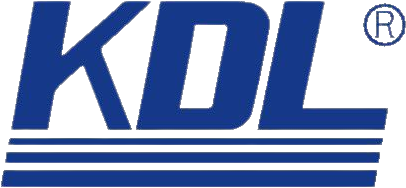
Animal health care is a big part of helping pets, farm animals, and wildlife live longer and happier lives. One simple tool plays a major role in this care every day: animal syringes. Whether you are a veterinarian, a vet student, a farmer, or a pet owner, understanding how syringes work can make a big difference in handling medicines safely and comfortably.
This article discusses what are animal syringes, how they work, the various types that are out there, and how to choose right one. Additionally, you will learn how to safely handle needles, as well as how to clean and store them. Experts and regular pet owners alike should feel comfortable using needles.
What Are Animal Syringes?
Animal syringes are medical tools used to give medicine, vaccines, and fluids to animals or to collect blood samples. They help deliver the correct dose of medicine into the body through the skin, muscle, vein, or mouth.
A syringe has three main parts:
- Barrel – the tube that holds the medicine
- Plunger – pushes or pulls liquid inside the barrel
- Needle or tip – used to inject medication into the body or to attach tubing
Different animals need different veterinary syringe sizes. A tiny kitten will need a much smaller syringe than a large horse or cow. The size of the needle also changes depending on the thickness of the skin and the type of injection.
Why Animal Syringes Are Important in Veterinary Care
Animal syringes are used every day in clinics, barns, shelters, and homes. They help with:
- Vaccinations
- Antibiotics and pain medicine
- Fluids for dehydration
- Insulin for diabetic pets
- Sedation for surgery
- Blood tests
- Feeding or giving oral liquids
Without syringes, it would be much harder to give exact doses of medicine or treat sick animals safely.
Who Uses Animal Syringes?
Animal syringes are used by many different people, including:
- Veterinarians
- Veterinary technicians
- Farm owners
- Animal rescue teams
- Pet owners who give daily medicine
- Researchers and wildlife caretakers
Some syringes are made for professional use in clinics, while others are safe for home use, like insulin syringes for diabetic pets.
Animal Syringes Needle Gauge and Size: What Do the Numbers Mean?
Needles are labeled by gauge (G). The gauge number tells how thick the needle is. The higher the number, the thinner the needle.
| Gauge | Thickness | Common Use |
|---|---|---|
| 18G | Thick | Horses, cattle, thick fluids |
| 20G | Medium | Dogs, goats, sheep |
| 22G | Thin | Cats, small dogs |
| 25G–29G | Very thin | Small pets, insulin |
For example, insulin syringes for cats and dogs usually use tiny 28G or 29G needles.
Needle length matters too. Longer needles may be used for deeper injections into muscle. Shorter needles are used under the skin.
You can find many options for high-quality veterinary needles, including stainless steel and aluminum hub designs made for smooth injections. If you need to explore different models, you can look at veterinary hypodermic needles and aluminum hub needles or copper hub veterinary needles available from proven manufacturers.
Types of Animal Syringes
1. Disposable Syringes
These are used once and then thrown out. They are clean, safe, and common in clinics.
2. Reusable Syringes
Reusable syringes are often used in livestock settings for repeat vaccines or large herds. They must be cleaned and sterilized between uses.
3. Oral Syringes (No Needle)
Oral syringes have no needle. They help give liquid medicine into the side of a pet’s mouth. They are great for babies, birds, and small animals.
4. Insulin Syringes
These are very small syringes for diabetic pets. They have thin needles to reduce pain. Markings are in units instead of milliliters.
5. Luer Lock and Slip Tip Syringes
- Luer lock syringes twist the needle tightly so it will not fall off
- Slip tip syringes push the needle on without twisting
How to Choose the Right Animal Syringe
Syringe selection relies on many factors:
1. Size of the Animal
Large animals need bigger needles and larger syringe volumes. Tiny pets need small, gentle sizes.
2. Type of Medicine
Thick medicine needs a wider needle. Thin liquids can use smaller needles.
3. Where the Injection Goes
- Subcutaneous (under skin)
- Intramuscular (into muscle)
- Intravenous (into vein)
4. Dose Amount
The syringe size should match the dose. A small syringe gives better control for tiny doses.
Common Syringe Sizes for Animals
| Animal | Typical Syringe Size | Typical Needle |
|---|---|---|
| Cats | 1–3 ml | 22–25G |
| Small Dogs | 1–3 ml | 22–25G |
| Medium/Large Dogs | 3–6 ml | 20–22G |
| Horses & Livestock | 6–60 ml | 16–20G |
Animal Syringes for Farm Animals & Livestock
Livestock owners often use syringes to care for whole herds. Routine syringes are needed for:
- Vaccinating cattle and sheep
- Giving antibiotics for infections
- Deworming pigs and goats
- Treating newborn calves
- Giving vitamins and minerals
Automatic multi-dose syringes help treat many animals fast. They save time during vaccination days and help prevent disease outbreaks.
Animal Syringes for Dogs and Cats
In homes and vet clinics, syringes are used for:
- Vaccines
- Pain and inflammation medicine
- Insulin injections
- Fluids under the skin
- Liquid oral medication
Many pet owners learn to use syringes for diabetes care. Insulin syringes are thin and easy to handle.
Animal Syringes for Horses
Horses need large syringes for strong medicines and vitamins. Common uses:
- Joint medicine
- Antibiotics
- Dewormers
- Sedation injections before surgery
Needles must be strong because horse skin is thick.
Animal Syringes for Wildlife, Birds, and Small Pets
Tiny animals like rabbits, hamsters, reptiles, or rescue birds need gentle care. Small 1mL or 3mL syringes are used for:
- Hand-feeding baby animals
- Giving fluids
- Antibiotics in small doses
A thin needle keeps small pets from bruising or bleeding.
Animal Syringes: Safety, Storage & Disposal
Keeping everyone safe is important for animals, their owners, and the veterinary team.
1. Preventing Needlestick Injuries
- Use a new needle for every injection
- Never recap used needles
- Keep animals secure during injections
2. Safe Disposal of Animal Syringes and Sharps
Used syringes must be placed in a sharps container, not household trash.
Local vets, pharmacies, or farm supply stores usually offer disposal.
3. Sterilization Tips for Reusable Syringes
- Wash with hot water immediately after use
- Soak in disinfectant or boil according to manufacturer instructions
- Replace if damaged or stained
Common Mistakes When Using Animal Syringes
- Incorrect Needle Size or Gauge: Using a needle that is too big can cause pain. Too small may bend or clog.
- Improper Injection Angle: This can waste medication or cause bruising.
- Reusing Syringes or Needles: This increases risk of infection and makes injections painful.
Final Thoughts
Animal syringes play a crucial role in taking care of pets, livestock, and various other animals. Once you’ve got the right size, gauge, and technique down, injections get a lot easier, safer, and way less stressful. Knowing how to manage, store, and get rid of syringes helps keep both animals and people safe.
If you ever worry or feel unsure, talk with your veterinarian—they are always happy to help you learn and feel confident.
If you have the right tools and know-how, you can make sure your animals stay healthy and comfortable throughout their lives.
Key Takeaways
- Animal syringes come in many types, sizes, and gauges for different animals and uses.
- Smaller pets need smaller needles, while livestock need larger syringes.
- Always rotate injection sites and use a fresh needle each time.
- Safe disposal prevents injury and contamination.
- Proper technique keeps animals calm and reduces pain.
 +86-791-8686-1216
+86-791-8686-1216 

